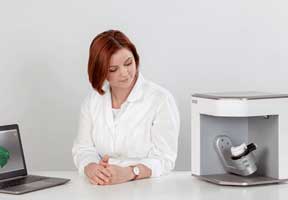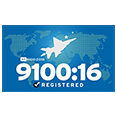
There are a number of things to consider when purchasing metrology equipment, such as CT scanners, 3D scanners, or CMMs. Looking simply at cost will not suffice when choosing equipment that will properly suit your needs and function well with other equipment and processes. Because it can be difficult to know where to start, we have put together a helpful list for more successfully choosing the metrology equipment you need for your specific purposes or project.
Size of Parts
When it comes to choosing between metrology equipment sizing options, avoid catering to the largest or smallest parts you will need for any given application. If you select a piece of hardware for a rare application requiring a large part, you will find yourself tackling a cumbersome scanning process when using the equipment for more-common medium or smaller-sized parts.
Instead, aim for the average size that will suit your usual purposes or for equipment that can be easily adjusted for different project types. Indeed, equipment with flexible or adjustable sizing ranges are ideal. For example, hardware like Portable CMM arms, such as the Absolute Arm in particular, can be repositioned and tied into a local coordinate system to extend the measuring volume. Additionally, structured light systems can use different measuring windows when lenses are switched out.
Computer Compatibility
When choosing metrology equipment, it is essential to consider computer software and component compatibility. You will want to have a fully compatible computer with sufficient data processing power for the chosen metrology device. With modern 3D scanning equipment scanning 1 million-plus points per second, 3D scanning software with the ability to process that amount and frequency of data is mandatory.
Additionally, some software is GPU (graphics processing unit) reliant, so you will want to invest in the best graphics card you can afford. GPUs are important because they enable a computer to process graphics and more complex calculations, vital components of 3D renderings. Additionally, the best graphics card will offer 6GB of graphics memory or more.
RAM, or system memory, is also important for writing data quickly. You may need to dedicate anywhere from 8 GB to 32 GB of RAM to 3D rendering purposes. Enough RAM will enable information storage for the rendering process, thereby ensuring it is done properly and efficiently when the time comes to process a render.
Technical & Operational Training
Unfortunately, not all metrology equipment is plug-and-play when it comes to its user interfaces and functionality. Indeed, some people will experience a steeper learning curve with their newly acquired device than others, depending on their prior exposure to, and familiarity with, such equipment. But, this learning curve is also affected by the processing software [see above] and the specific application and end goals.
Actually scanning an item is perhaps the simplest part of the whole process. Rather, identifying quality data and processing it accordingly will take up the majority of time and effort. These aspects of the process are where professional training comes in handy.
No matter what, some level of 3D scanning training will likely be needed in most cases. Conveniently, when you choose Exact Metrology equipment, we also provide the necessary training that will help any user to achieve superior results with their new 3D scanning equipment. Our training sessions are always conducted by engineers and include hands-on exposure as well as the chance to test out your own projects. Additionally, these trainings can be attended at one of our facilities or on-site so we can work with your whole team and your own equipment.
A Device Champion
Lastly, determine who will be running the metrology equipment you choose. In most business and research settings, a dedicated individual is chosen to oversee and operate expensive devices, like 3D scanners. Choosing a dedicated and knowledgeable person or team for this job will benefit the training portion mentioned above and will likely save money and time in the long run. Additionally, this professional can champion the product to investors when applicable. They may also serve as the go-to person for internal questions about the device’s functionality and output.
Once you know who this point person will be, you can better determine what level of training is needed and work with this individual to choose appropriate sizing and software. This assistance will be particularly if they have a firmer grasp on project needs going into the purchasing process.
Contact Exact Metrology for Metrology Equipment
At Exact Metrology, we sell a wide range of metrology equipment for a variety of purposes. We also implement and service these products, so as a customer you know you can return to us for machinery support when needed. We are also happy to answer your questions about any of our 3D scanning services and equipment to help you determine which products will best support your intended applications. Contact Exact Metrology for metrology equipment.





